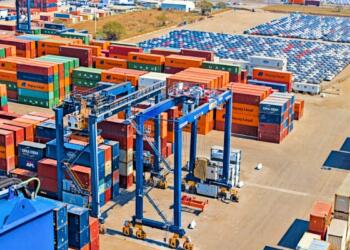
As a key sector in Mexico’s economy, the automotive industry offers great opportunities for the future of investments and the country.
This is a sector with a share of 4.7% of the Gross Domestic Product (GDP), while on a global scale, it ranks seventh in light vehicle production and fourth in auto parts manufacturing; in addition to having an impact on 60% of economic branches.
In this context, the Mexican Automotive Industry Association (AMIA) organized the first Mexico Drive Forward Summit 2024 , a discussion in which industry representatives, authorities and actors in the value chain exchanged points of view and, above all, possible strategies that will contribute to the Mexican industry getting on the nearshoring wave and at the same time responding to the demands of the domestic market.
“The automotive industry is undergoing a historic paradigm shift, and for Mexico to continue being the major global automotive player, we must prepare ourselves. Therefore, it is crucial to discuss the current situation of the industry and its future, involving the government, the industry and all the actors in the ecosystem,” explained Odracir Barquera, general director of AMIA.
In an interview with T21, Barquera explained that the relevance of Mexico Drive Forward Summit 2024 is located in the context of the arrival of a new government in Mexico, and with it, a cabinet that will make decisions that will impact the sector.
“First of all, we must take into account that in 2023 the automotive industry had a trade balance of 108 billion dollars, which represented 30% more than what was obtained from remittances and the tourism sector together,” he said.

The AMIA CEO added that the industry worldwide is undergoing a historic transition and explained that today the paradigm is changing, because we are moving from producing and acquiring internal combustion vehicles to new technologies that are aimed at reducing emissions.
This situation represents a profound change in production processes and if Mexico wants to maintain its position as an automotive producer and exporter, it must invest in electromobility, which Barquera described as Mexico’s real long-term opportunity .
However, for this to become a reality, it is necessary to attract the necessary investments to change the production plant and build a new supply chain, said Barquera.
In this regard, Daniel Hernández, president of the National Cluster Network , stressed that in the 15 regions that host the 12 existing clusters in Mexico, changes have occurred that have contributed to the development of local supply and opened opportunities for Mexican entrepreneurs to connect with the supply chain and generate more and better jobs.
“Today we see an effect in the different regions of the country of seeing how the automakers and Tier 1 companies of the automotive industry begin to locate their engineering centers in the country, and that takes us to another level of development of competencies and capabilities; and in terms of the supply chain, the closer we are to the early engineering cycles, the more opportunities there are for suppliers to participate in the development of new products,” Hernández explained.
For his part, Francisco Cervantes, president of the Business Coordinating Council (CCE) , said that more than separate industries, it is necessary to see it as an automotive ecosystem in which all actors converge, with the objective of working in favor of the entire value chain, especially in the context of the review of the Treaty between Mexico, the United States and Canada (T-MEC) and, of course, in favor of the environment.
Within the framework of Mexico Drive Forward Summit 2024, Graciela Márquez Colín, president of the National Institute of Statistics and Geography (Inegi) , reaffirmed the importance of the automotive industry in the country . She also assured that it is necessary to redouble efforts both by the sector and by Inegi itself, to position the automotive industry and know where it is.
Automotive industry data:
- It impacts 140 branches of industry.
- The gross value of automotive production is comparable to the GDP of Guanajuato, which is the fifth largest economy in the country.
- It represents one-fifth of the country’s manufacturing.
- Women’s participation is 37 percent.















